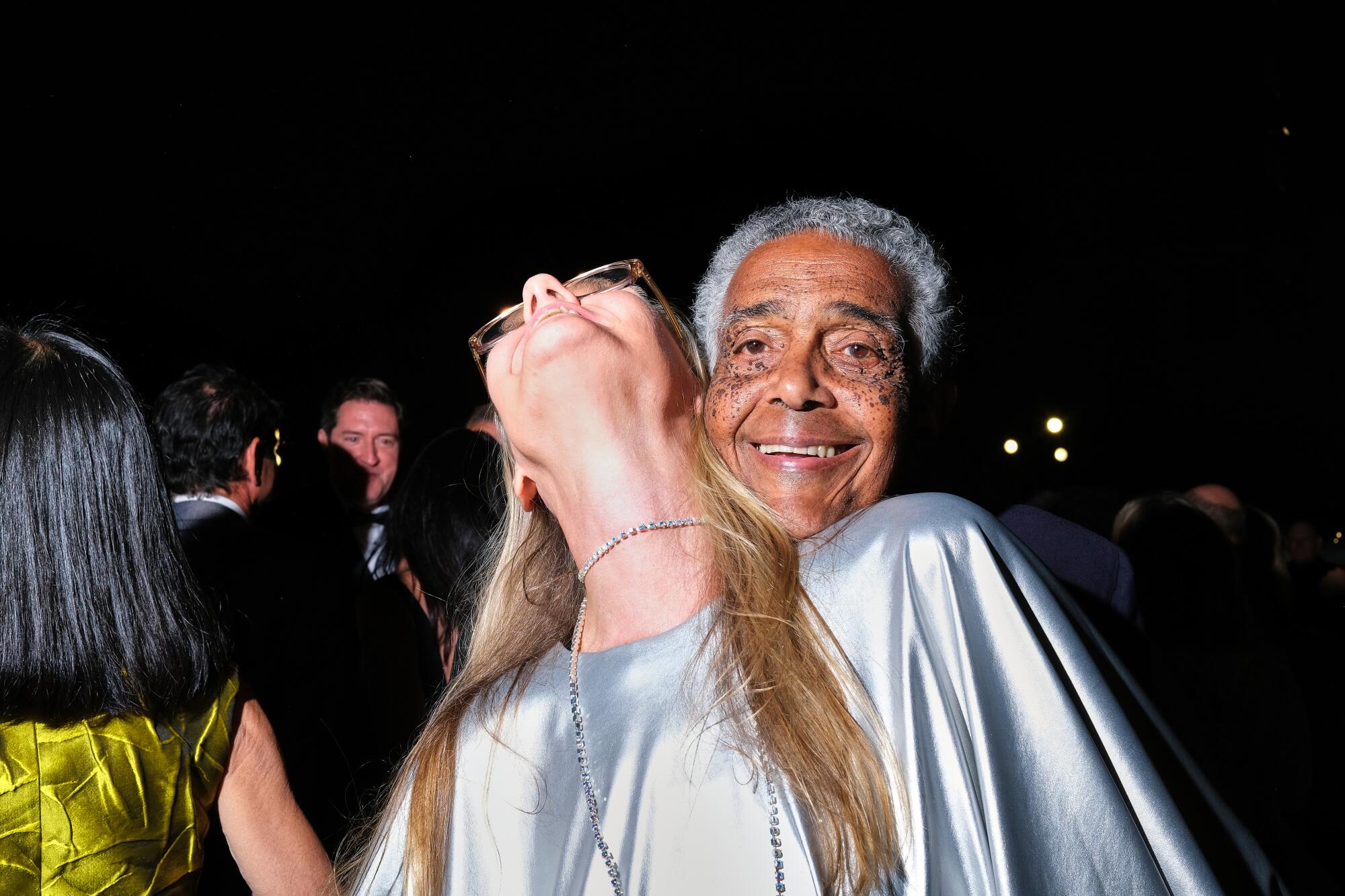
There are museum galas that call for cocktail attire. And those requesting guests arrive in black tie formalwear. And then there is “utopian black tie.”
Such was the case at the Orange County Museum of Art gala Saturday night, which requested its nearly 400 guests arrive clad in utopian black tie. The dress code appropriately set the tone for the evening, however, an upbeat if earnest affair marking the debut of the museum’s new, $94 million building, which opens to the public Oct. 8.
And utopian black tie, as it turns out, is vastly interpretive. For museum donor Mary Carrington, that meant an architectural Comme des Garcons cage skirt dress with black ruffles; for donor Marsha Anderson, a poofy, black satin sack dress by Rabih Kayrouz; for donor Mindy Stearns, a floor-length dress, by a French designer, made of mesh and geometric mirrors. And for so many others, it meant sparkly silver.
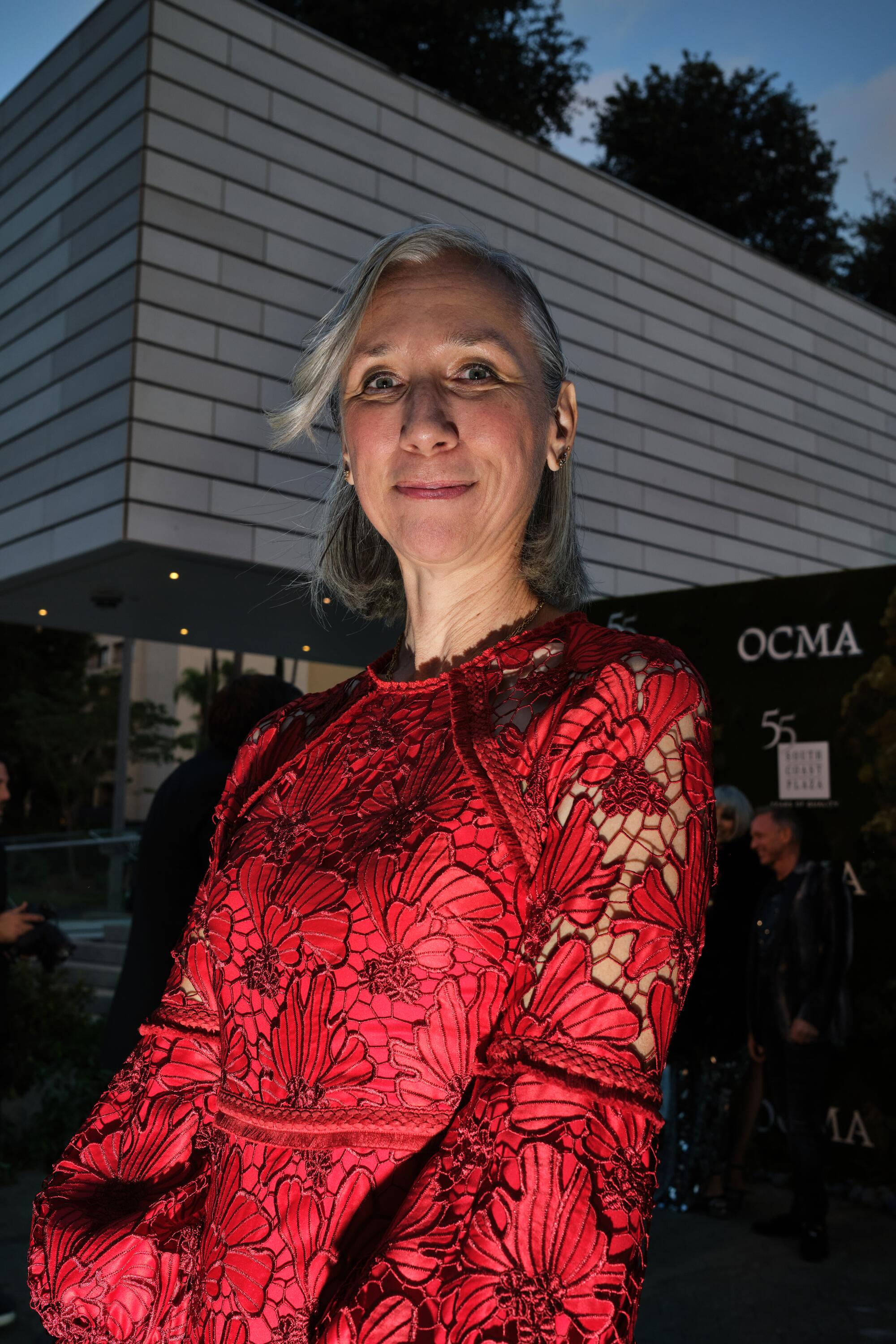
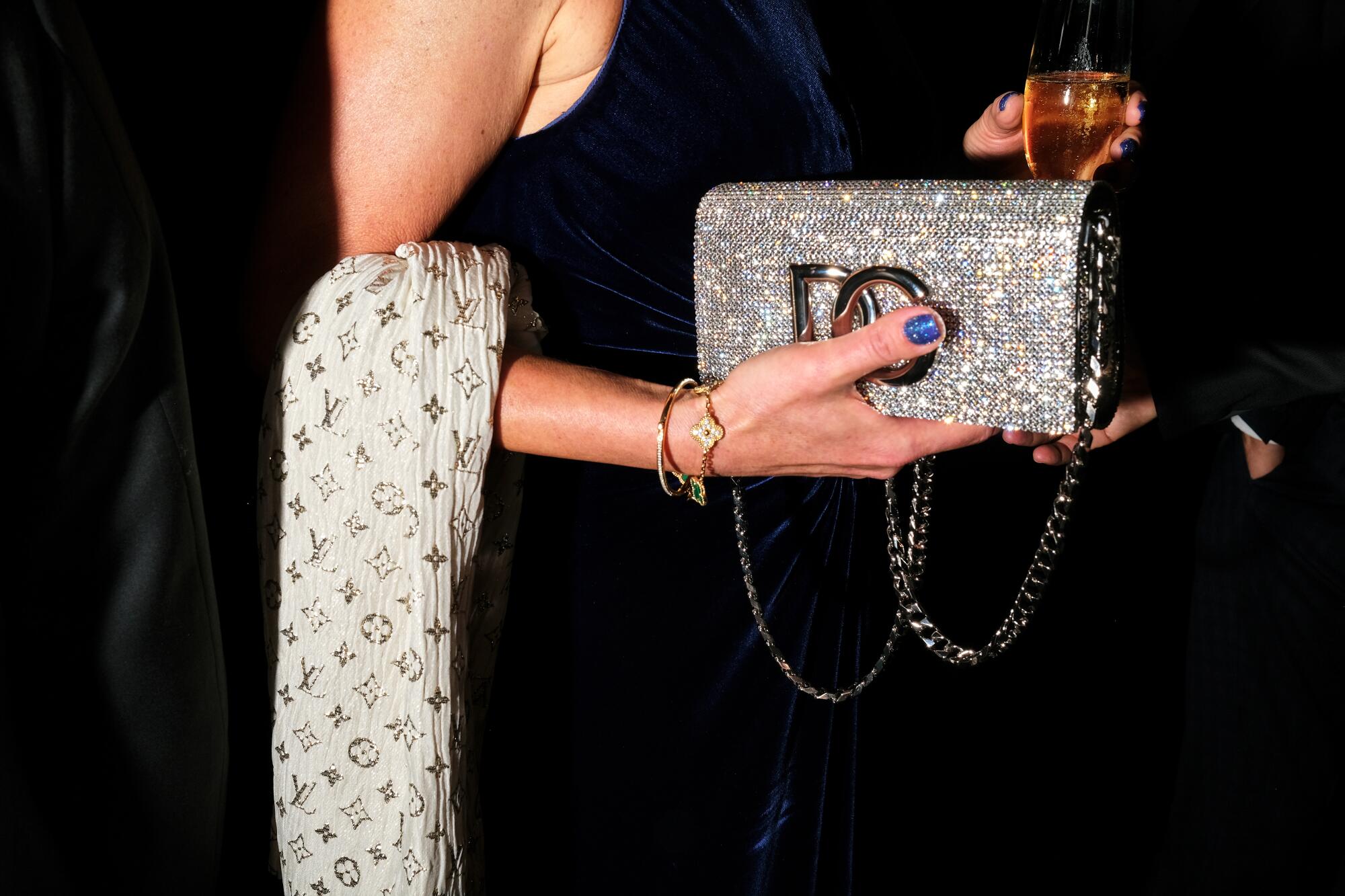
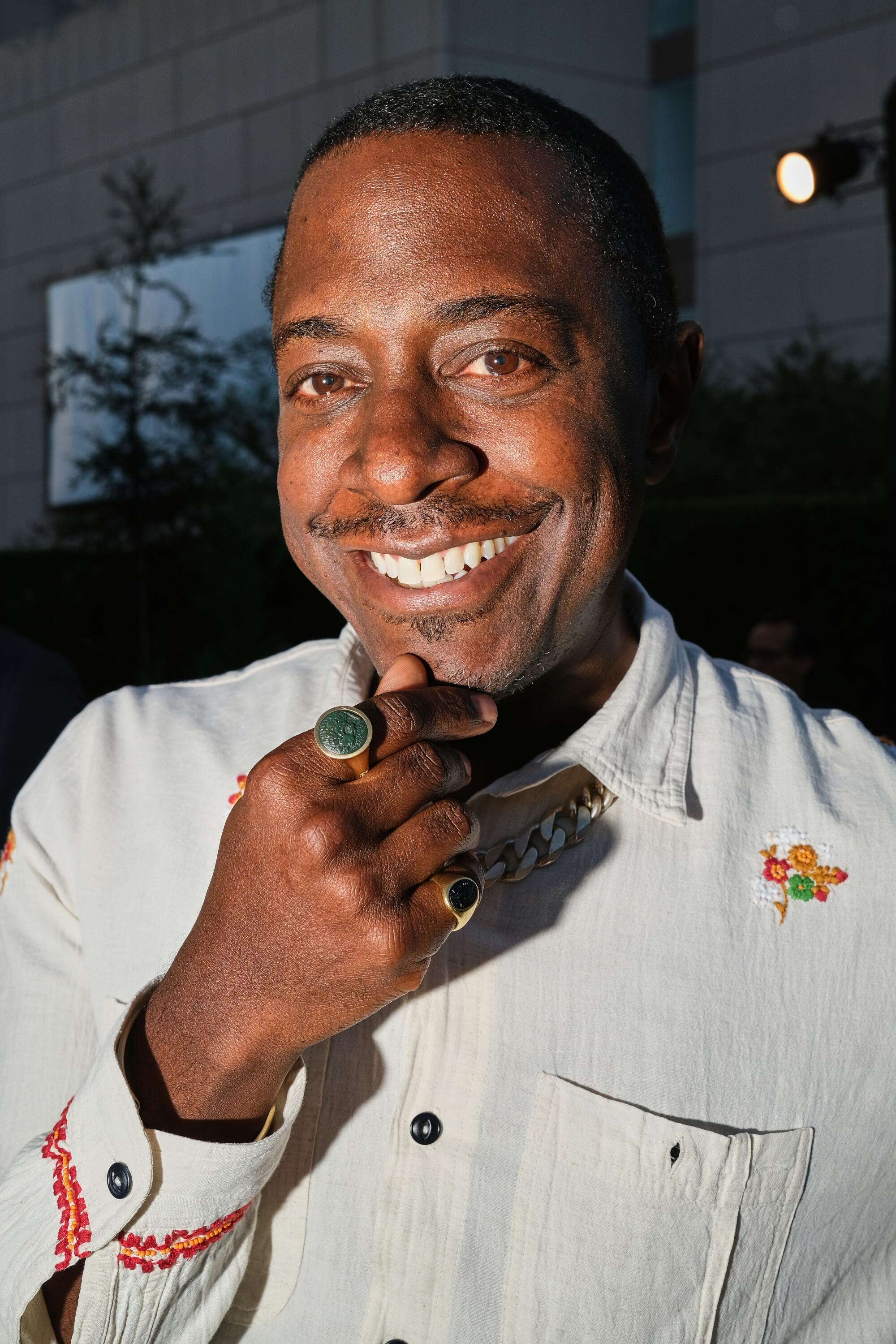
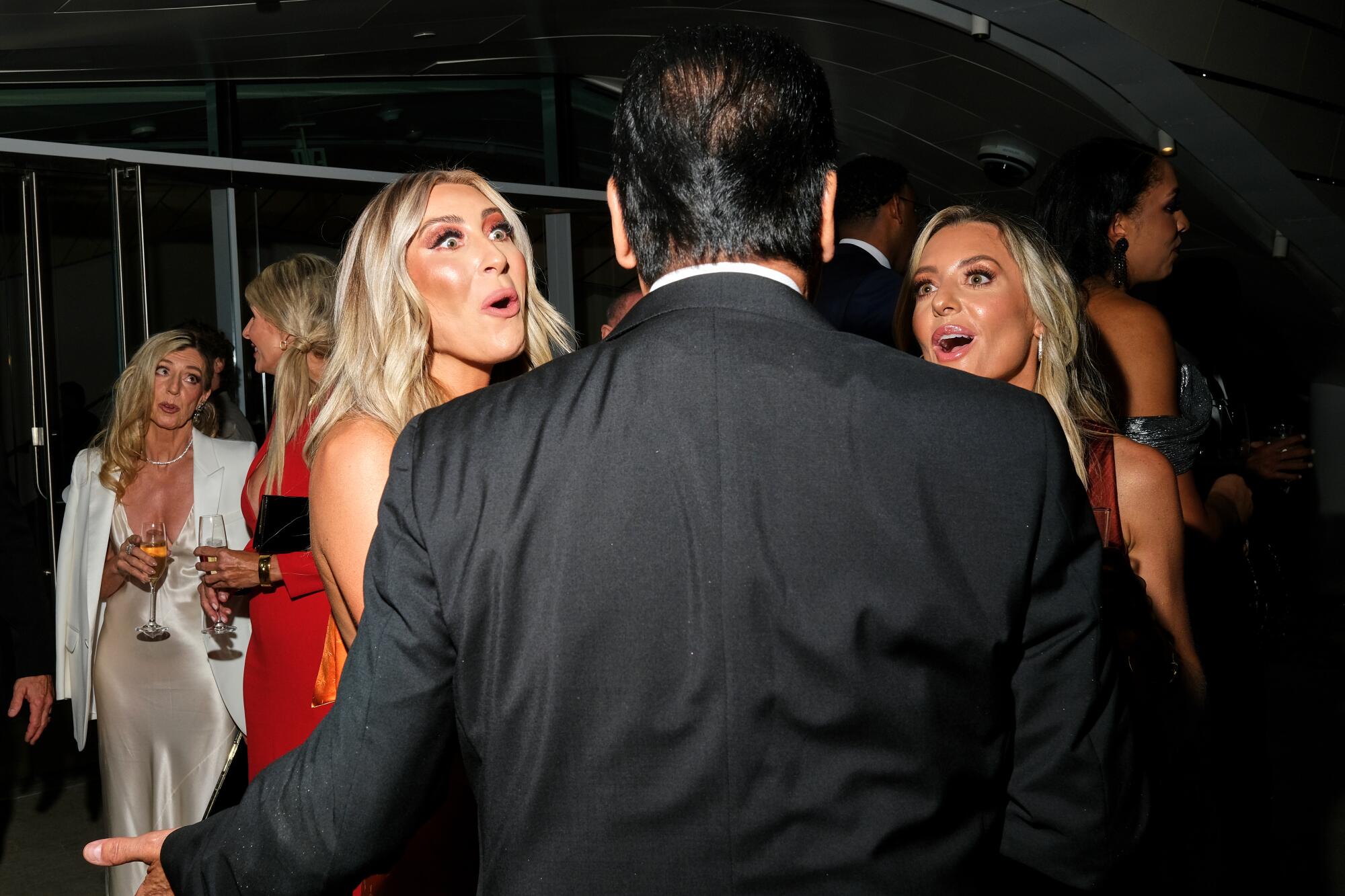
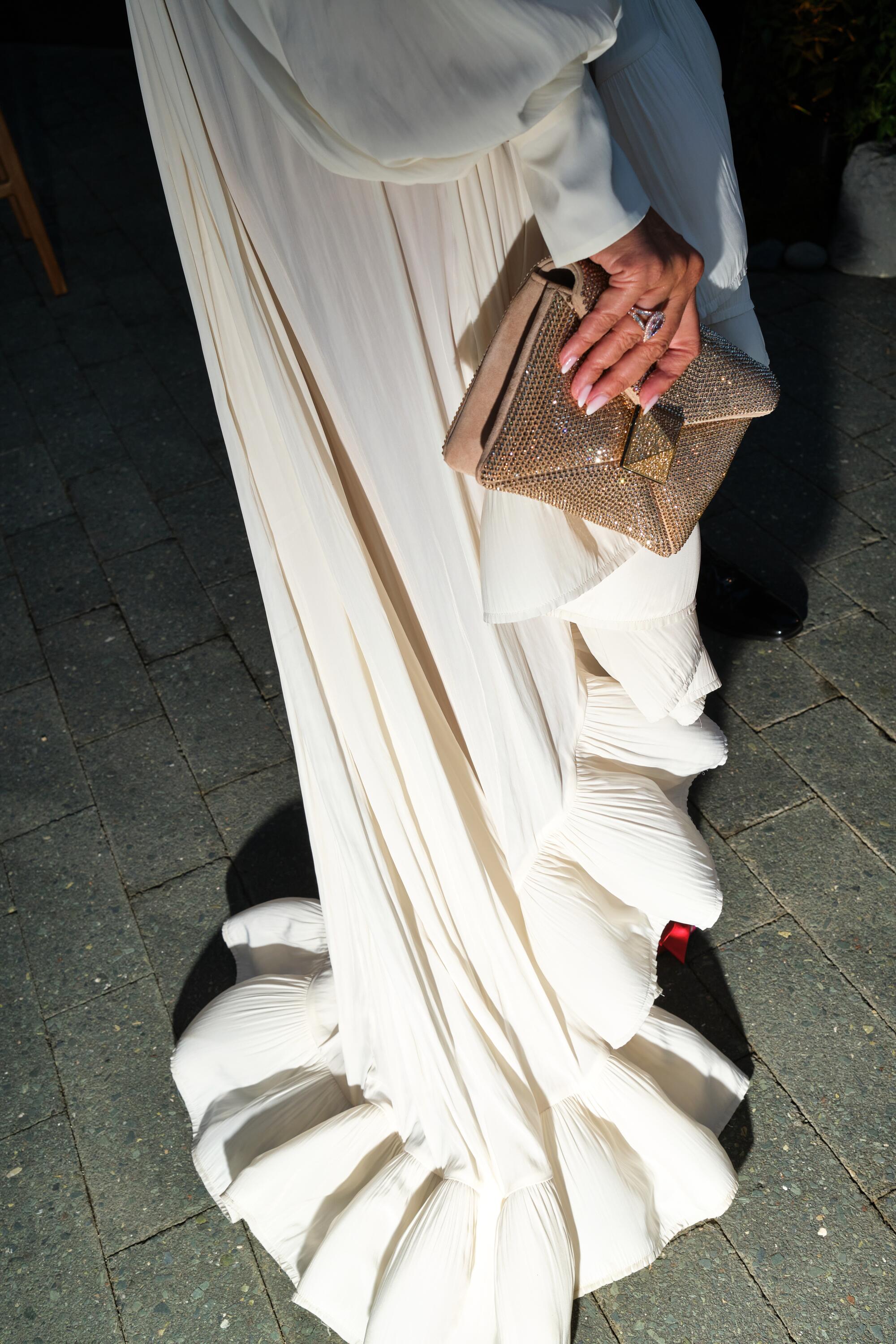
All of which made for a festive inauguration for Costa Mesa’s newest neighbor, which completes the campus at Segerstrom Center for the Arts. The scene was punctuated by colorful, pre-dinner cocktails, such as a vodka-spiked lemonade that morphed from clear to purple thanks to the organic butterfly pea flower floating in each glass.
Museum Director Heidi Zuckerman joked that her midnight blue, tiered tulle dress was “prom dress utopia” because “my boyfriend and I feel like teenagers together.” (His name was J.P. McNeill, and he wore a Scottish tartan.) Then Zuckerman turned serious. The evening for her was “thrilling,” she said.
“As the last piece of the cultural puzzle here on the Segerstrom campus, we’re able to animate and activate this space in a way that’s never been possible,” she said of the new museum building. “We’re open at 10:00 a.m., six days a week, and the fact that we have free general admission for the first decade, people keep saying, ‘Really? It’s free?’ We know that contemporary art can be weird or scary for people, so to remove as many barriers to entry as possible, it’s just a dream come true.”
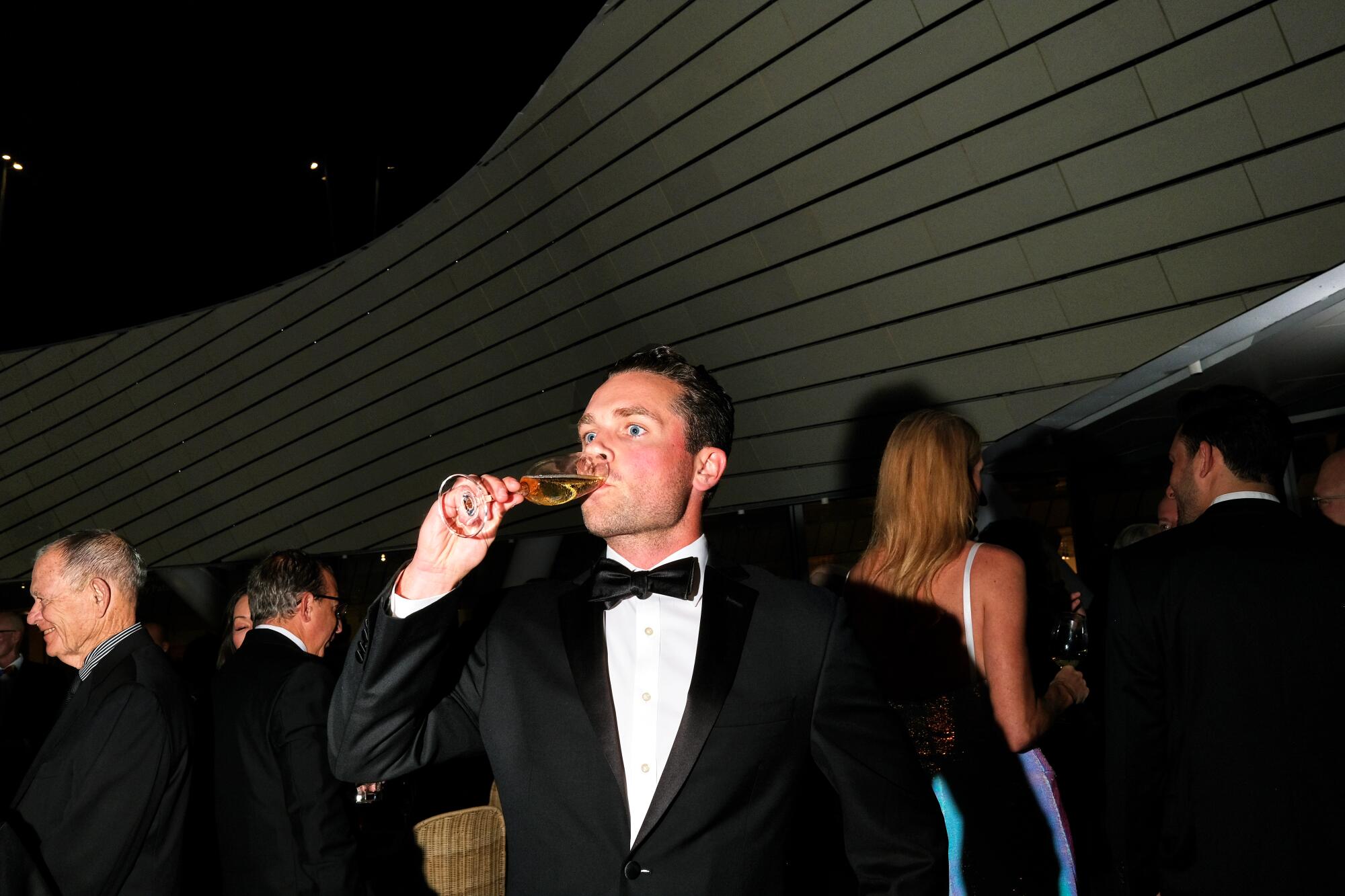
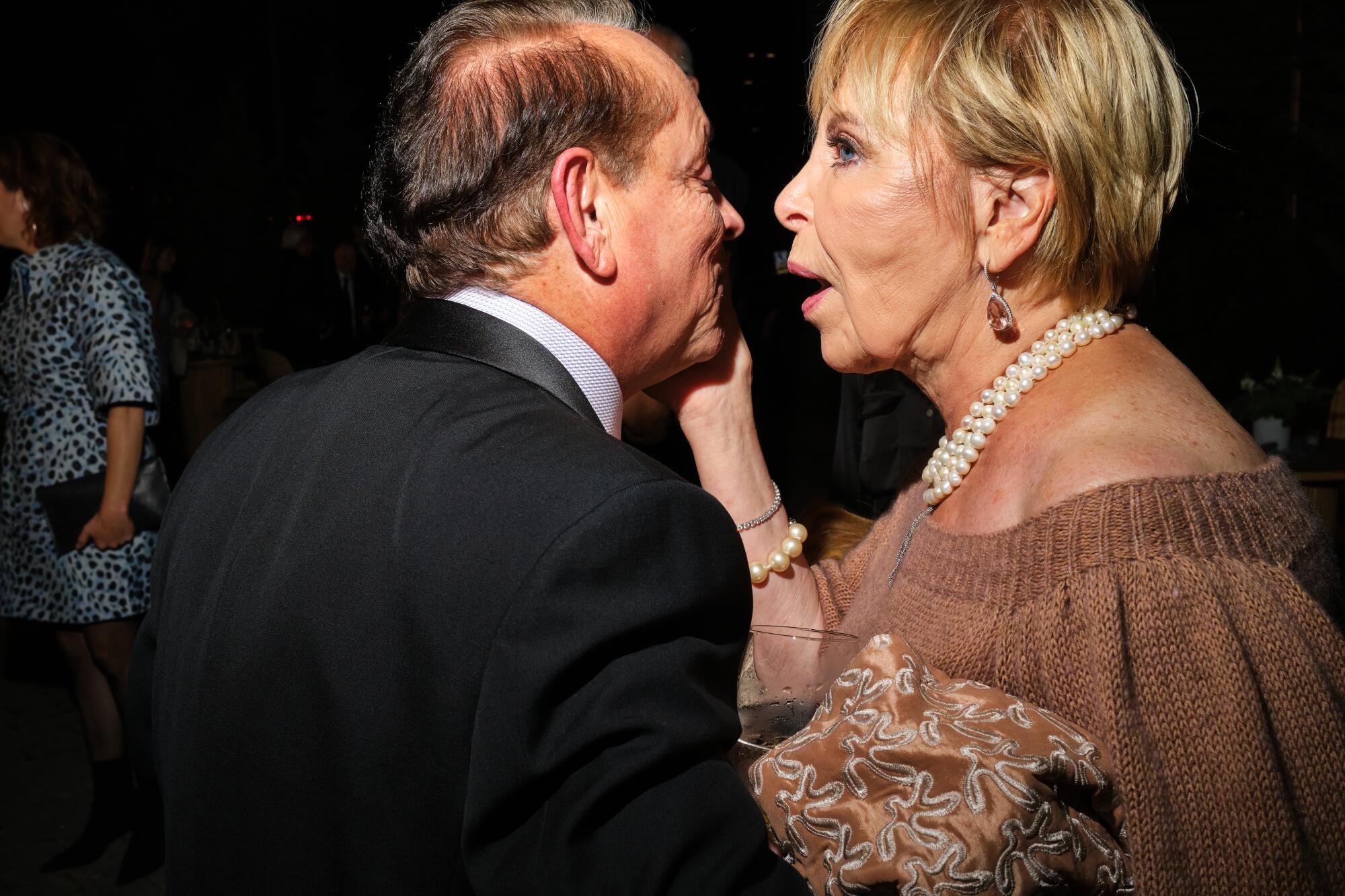
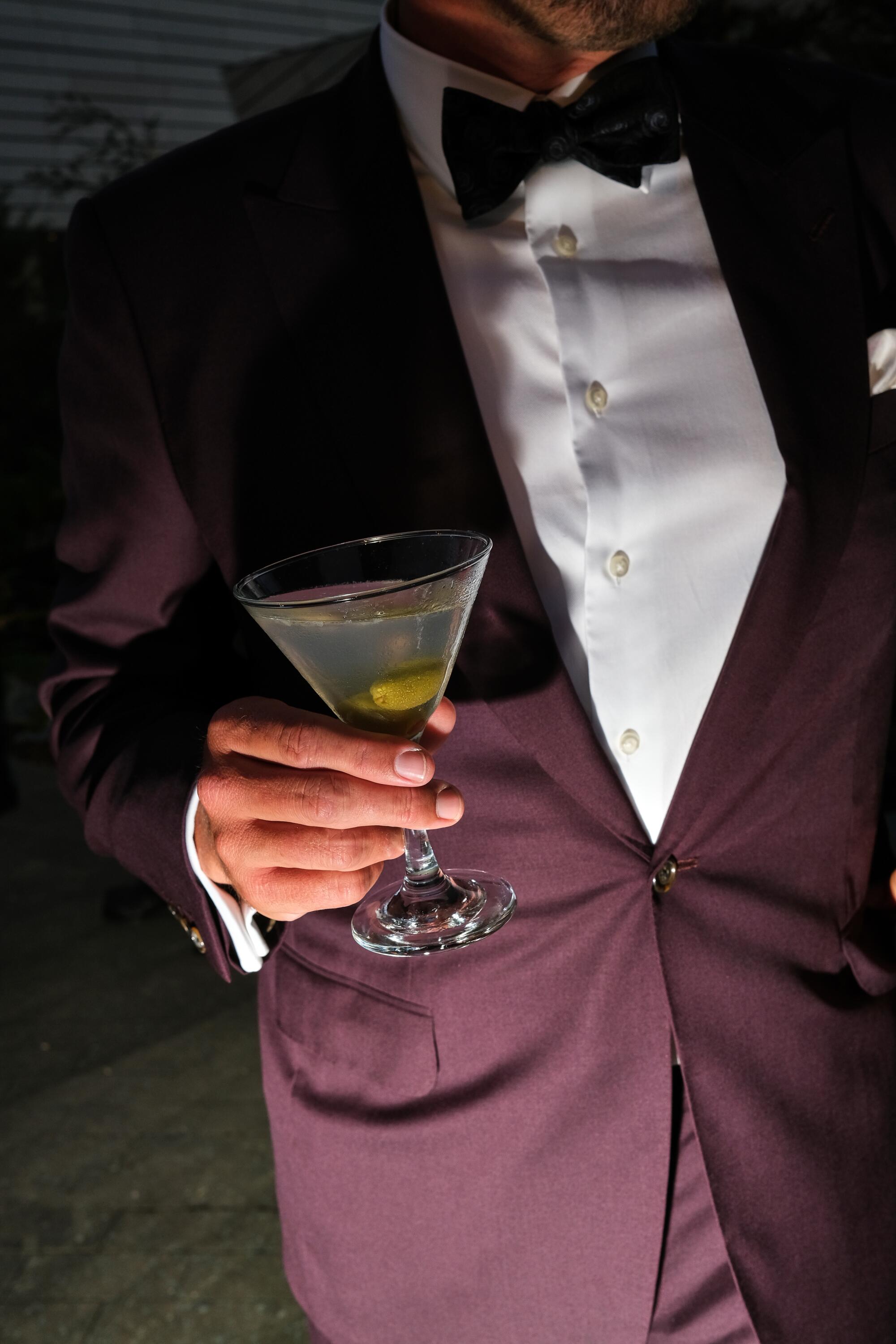
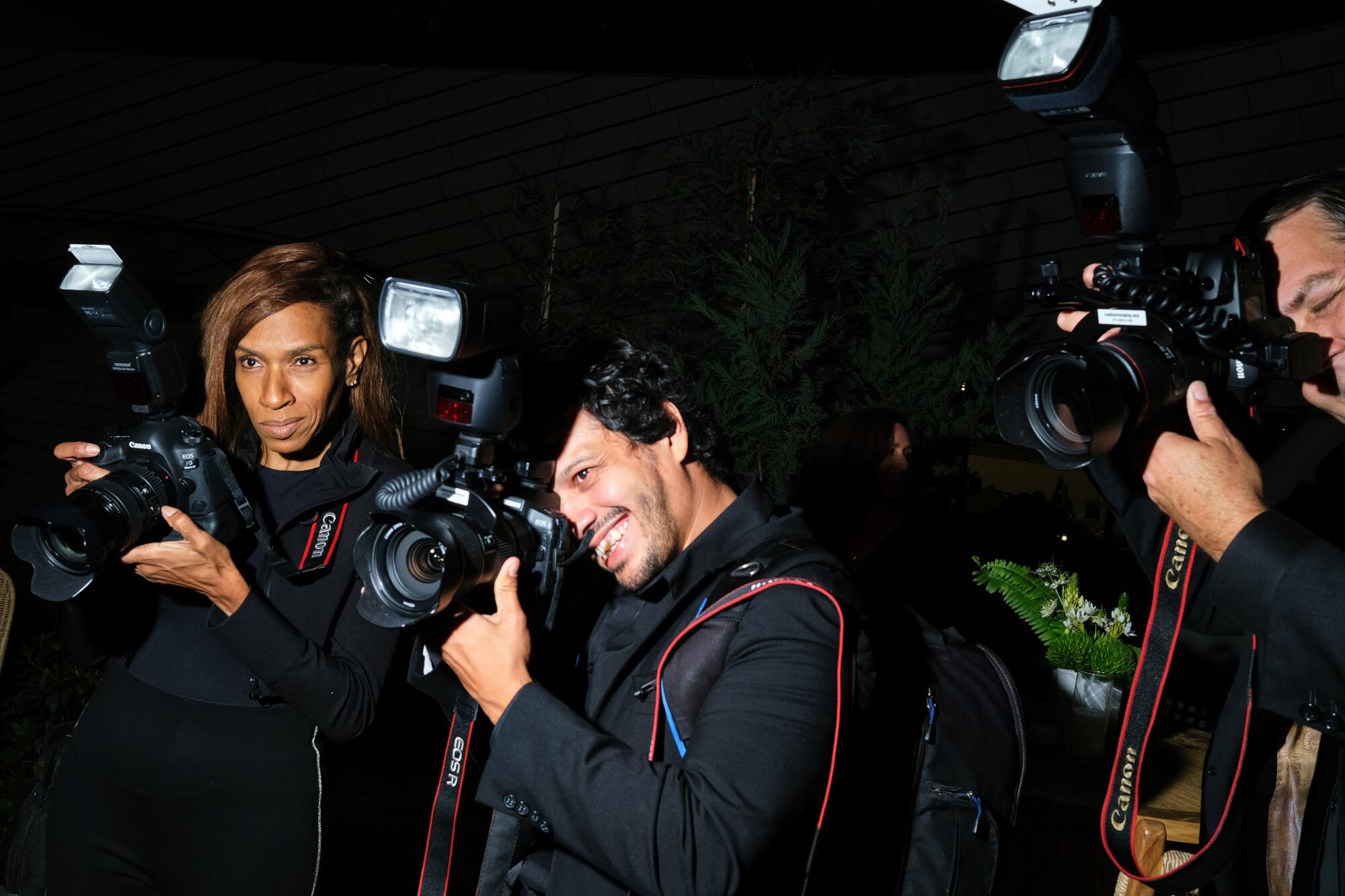
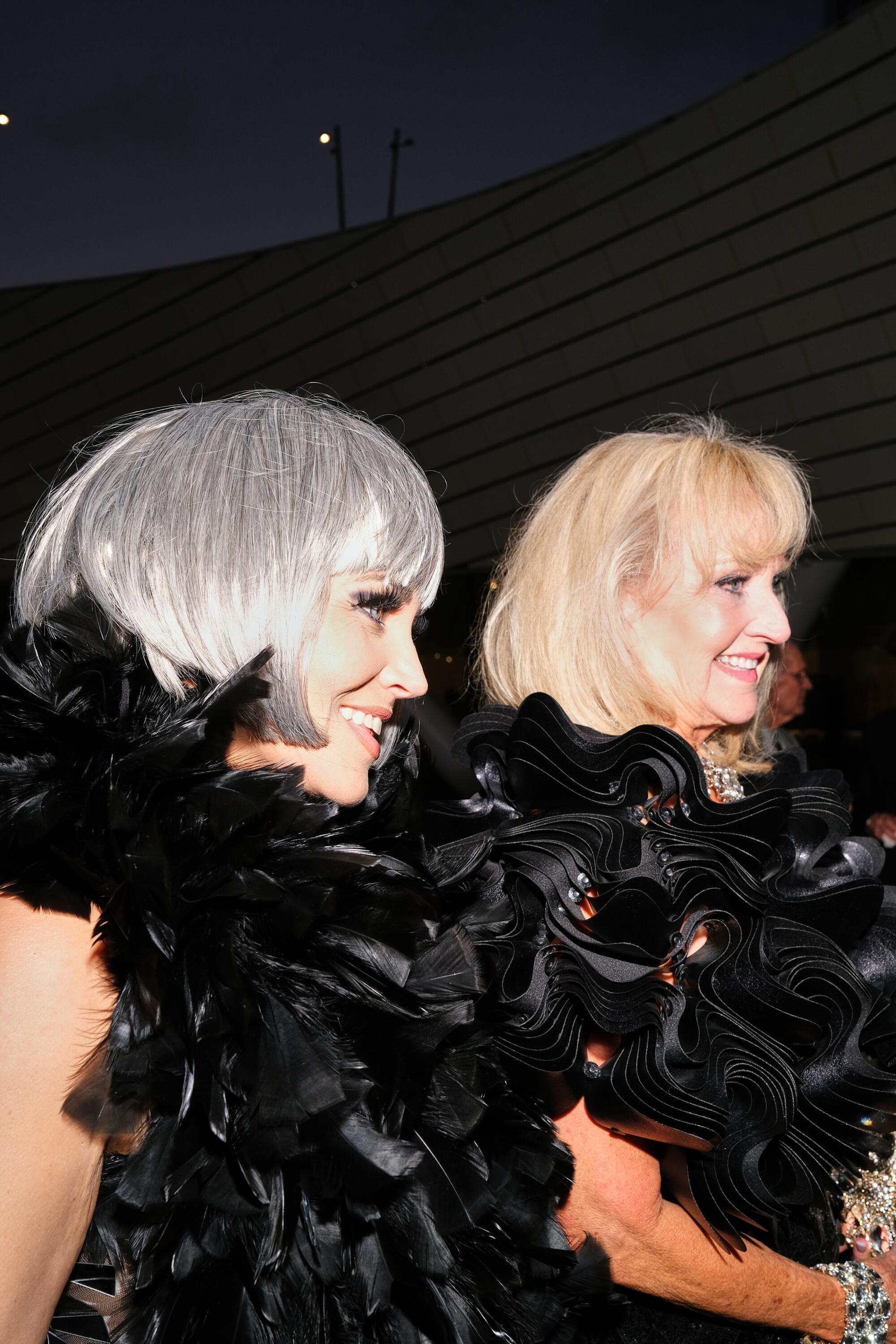
The Morphosis-designed building, under the direction of Pritzker Prize-winning architect Thom Mayne and Managing Partner Brandon Welling, has been more than a decade in the making.
During cocktails, Welling surveyed the scene — a mix of high polish, with the building’s gleaming glass and terra cotta tiles, and a few admittedly rough edges, such as a patch of the building exterior where the tile edges were unfinished and exposed — and said it all felt “a little surreal.” But that’s how it goes with an ambitious new museum building.
“I’ve never opened a building I felt was 100% ready,” he said. “There’s always something. It’s not unusual.”
The OCMA opening, he added, was particularly fulfilling.
“We work on buildings all over the world, but the public ones are the best because you get an influx of perspectives and you affect the most people,” he said.
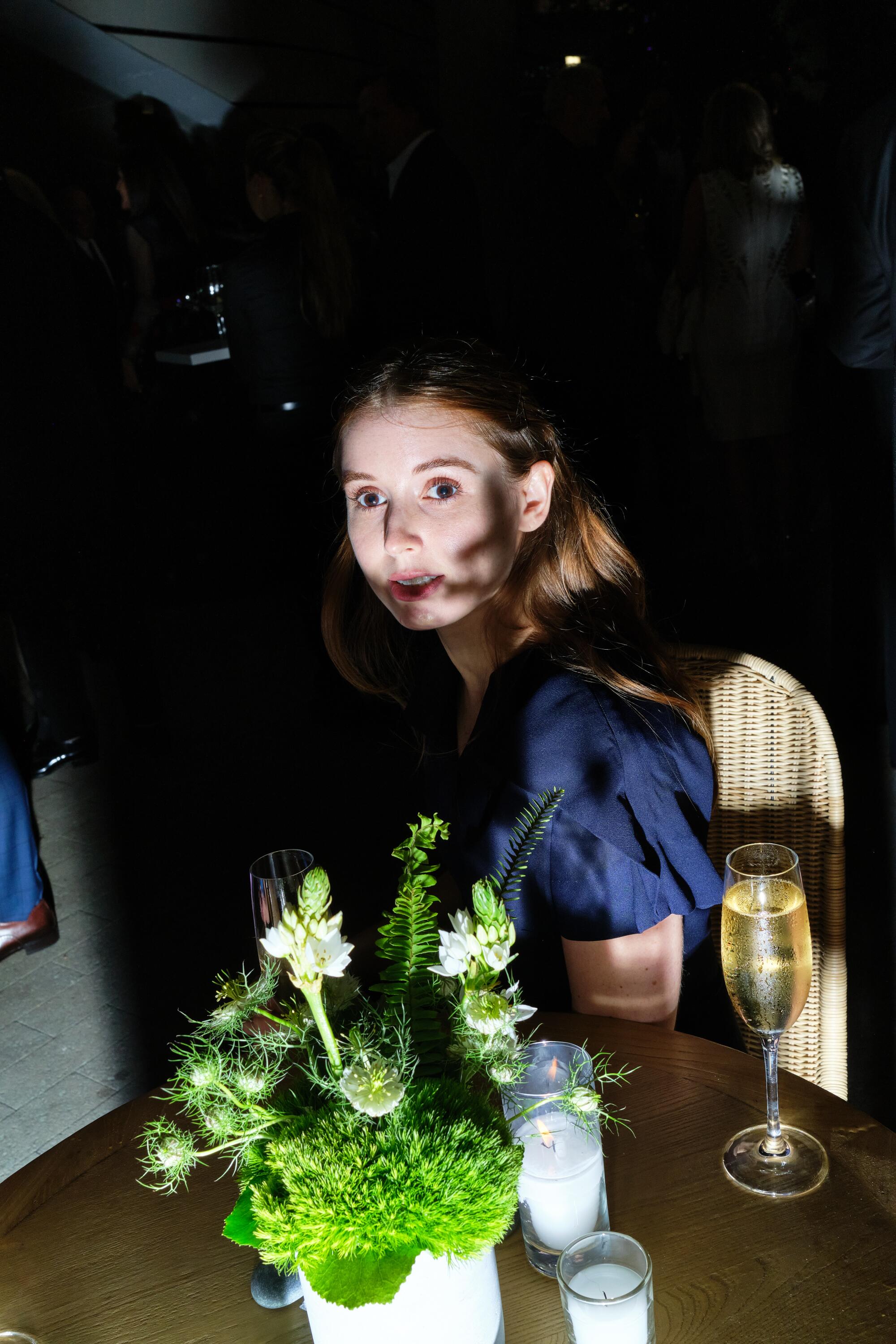
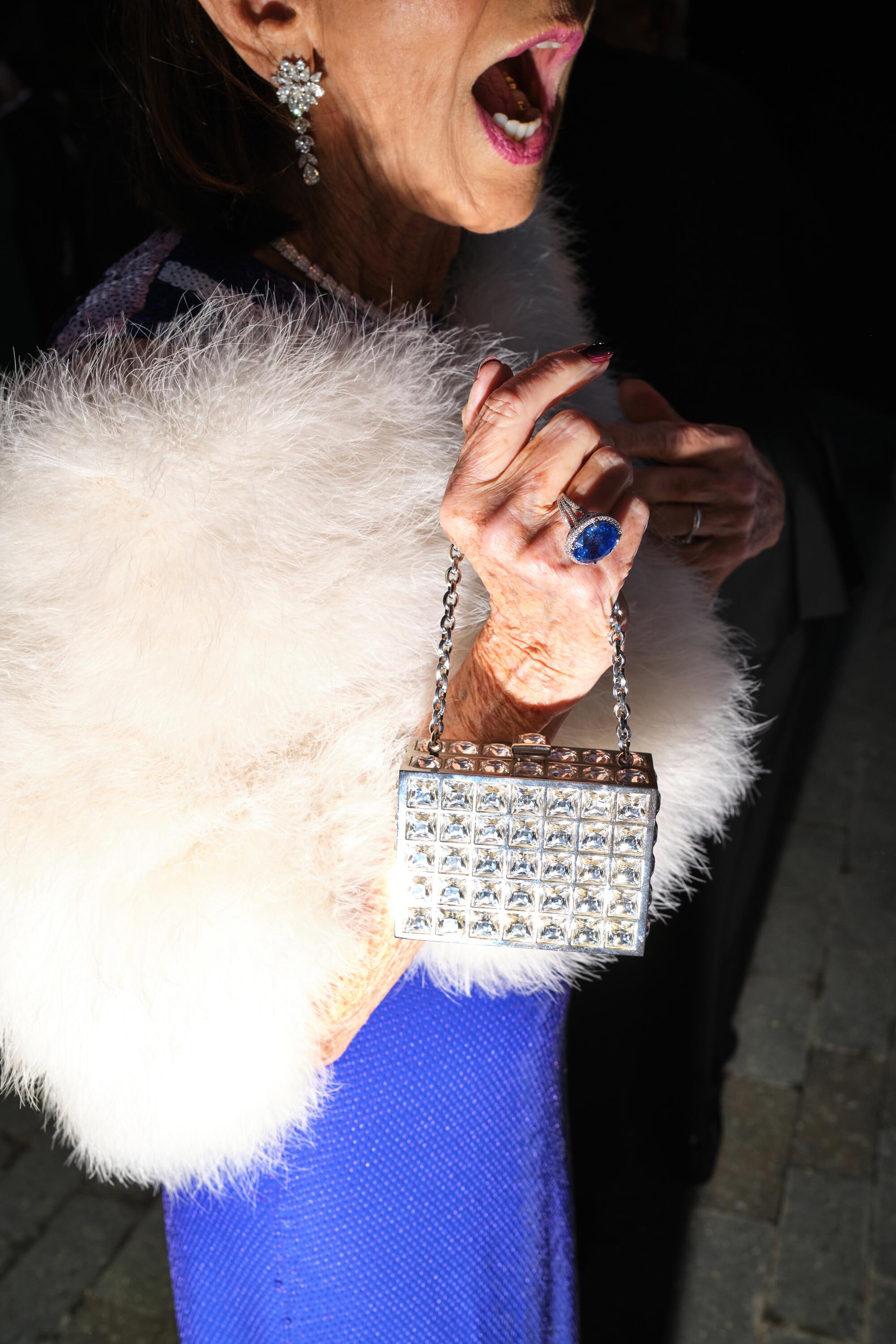
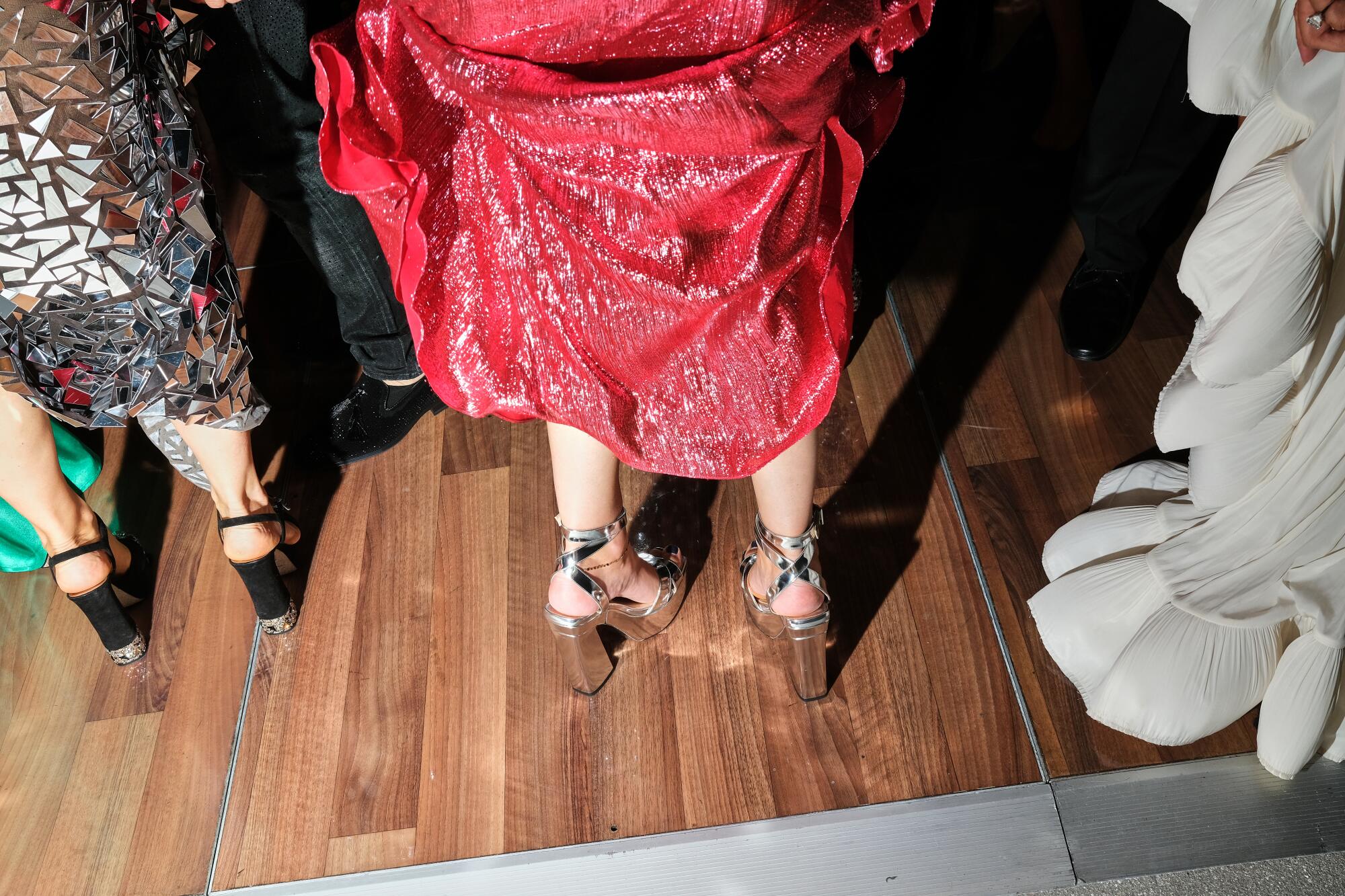
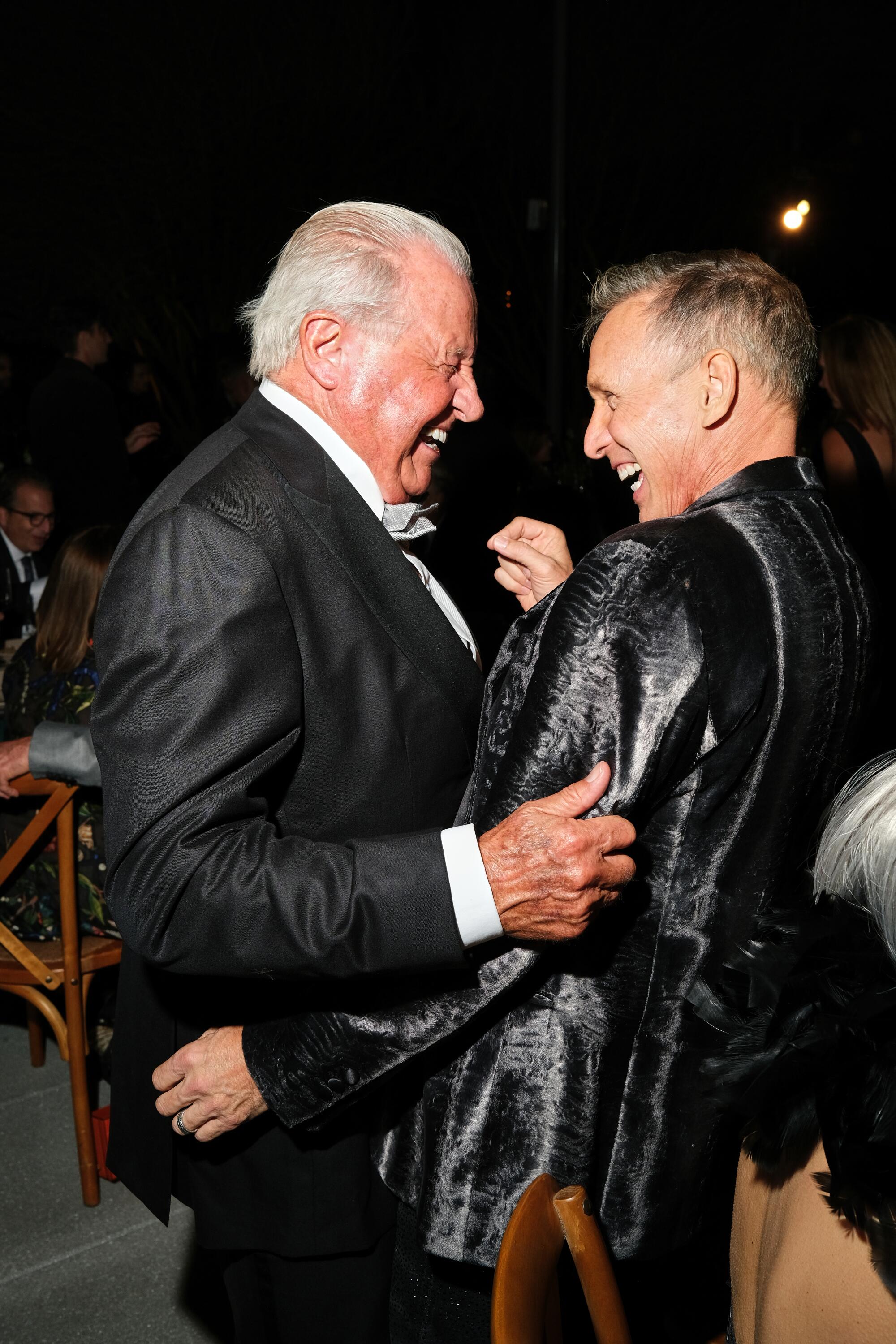
Among the artists in attendance — many of whom, Zuckerman said, she’s known more than half her life — were Sanford Biggers, Fred Eversley, Alexandra Grant, Doug Aitken, Lily Stockman, Fred Tomaselli and Peter Shelton.
Guests were treated to a preview of the museum’s opening exhibitions, which included a survey of work by 81-year-old, New York-based sculptor Eversley; a show of work by “13 pioneering female artists” in OCMA’s collection that pays homage to the museum’s 13 female founders; and a resurrection of the museum’s long-running California Biennial.
Heading into the exhibitions, Aitken noted the history of the area as it relates to the museum.
“It’s interesting how under-looked the influence of UC Irvine and Orange County has been for seminal art,” he said. “So many of the artists of the light and space movement — Chris Burden, Robert Irwin — all went to school down here. Every community needs to have their lighthouse, their beacon, and it’s interesting that there actually is a root system here that’s very deep.”
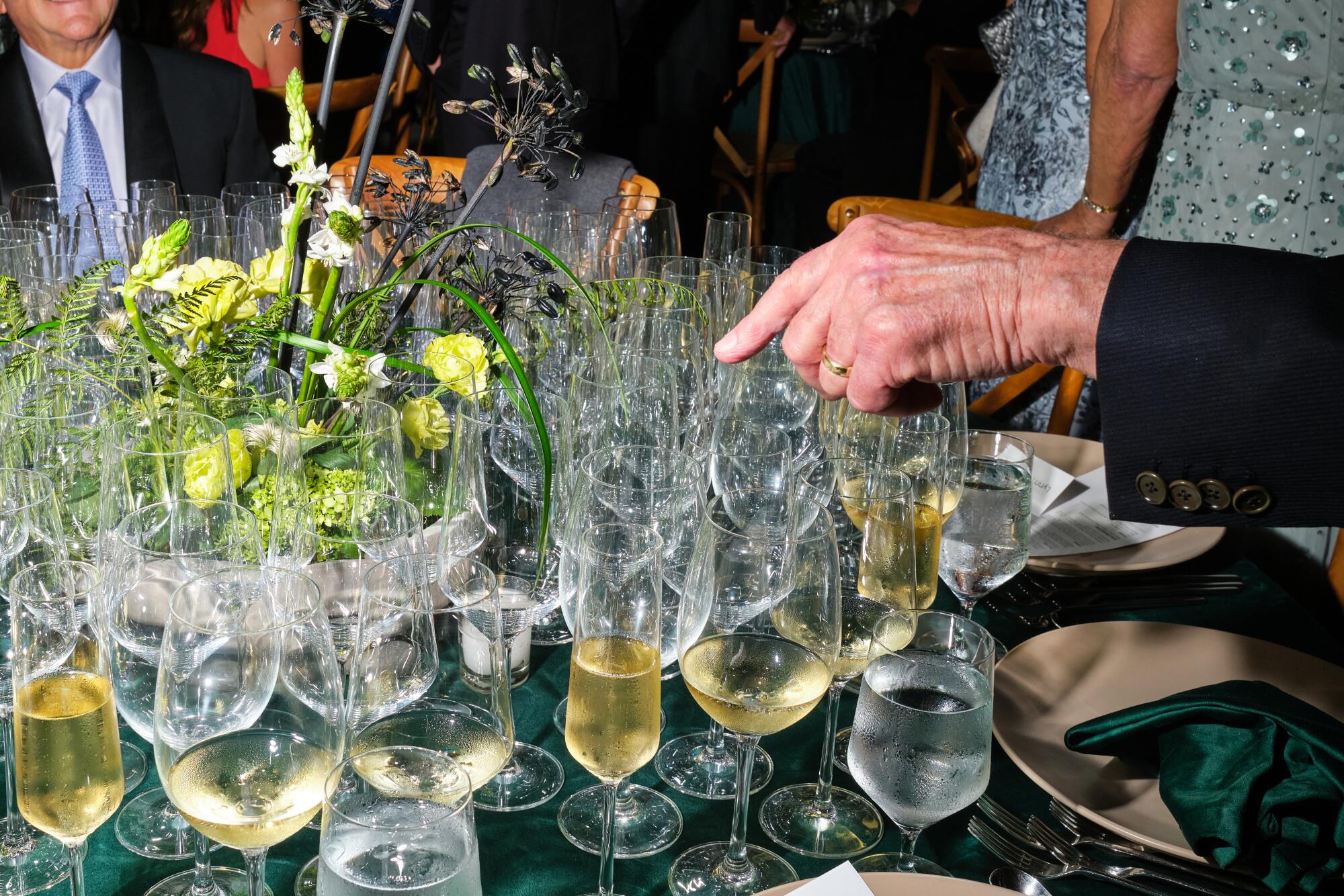
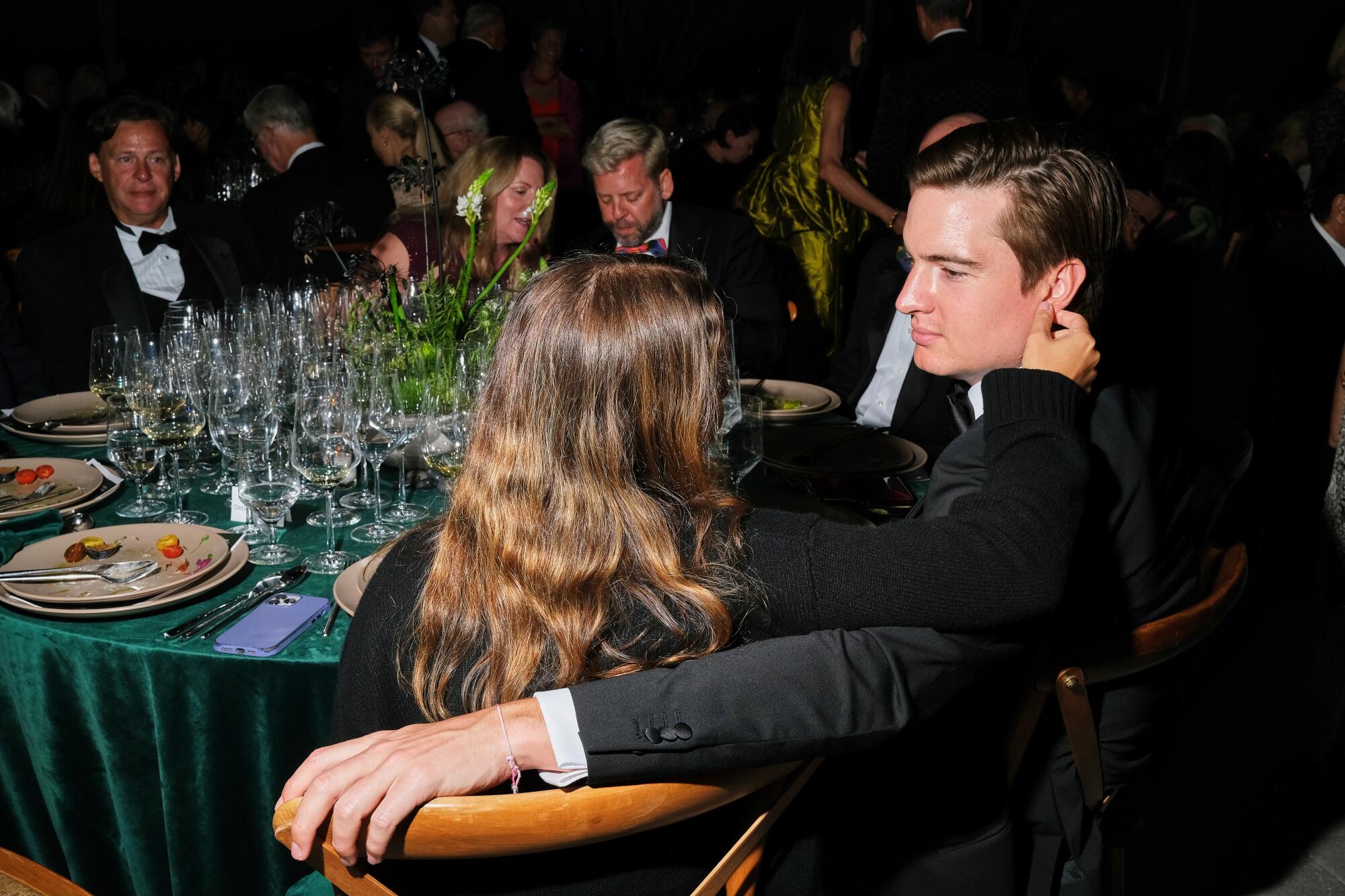
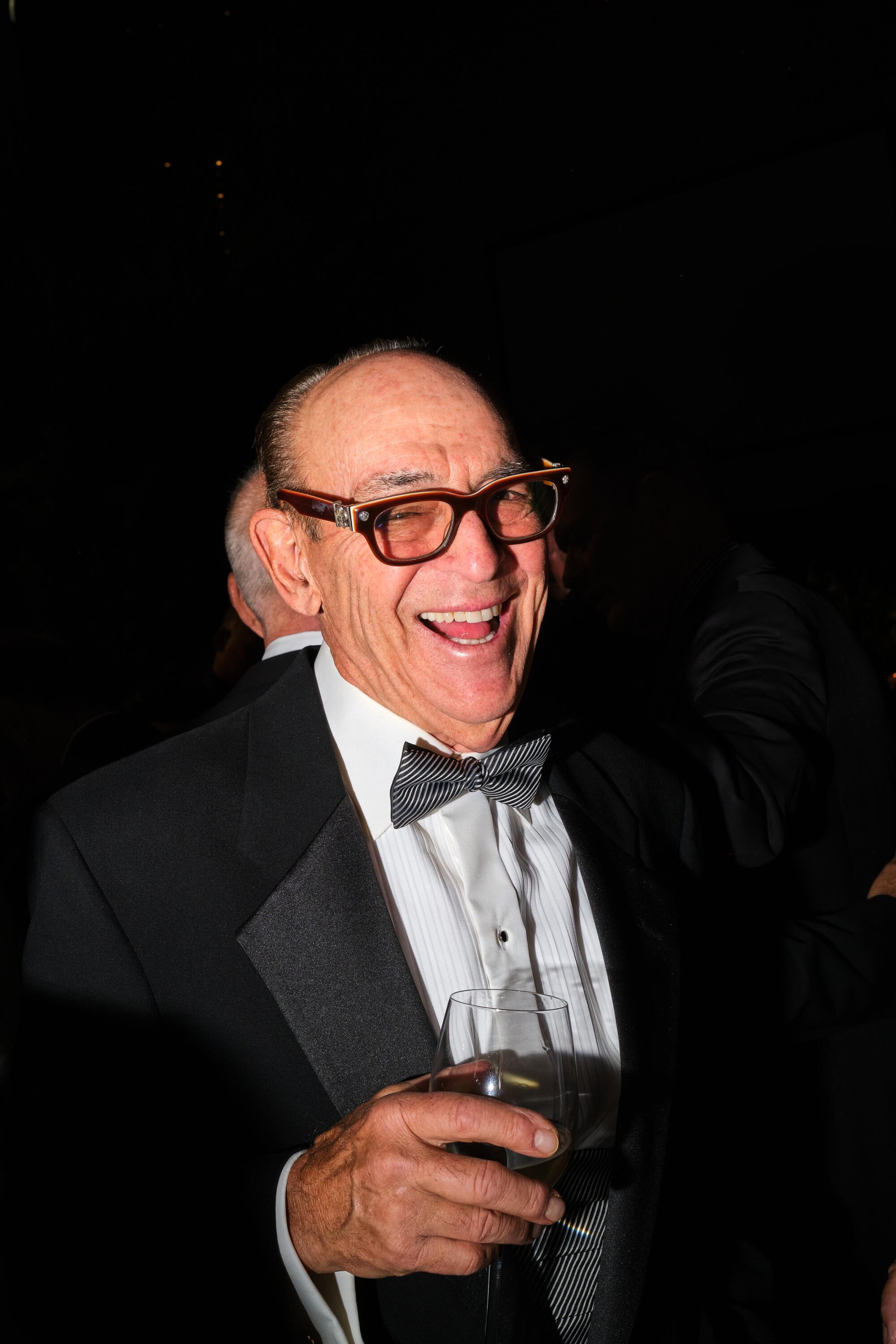
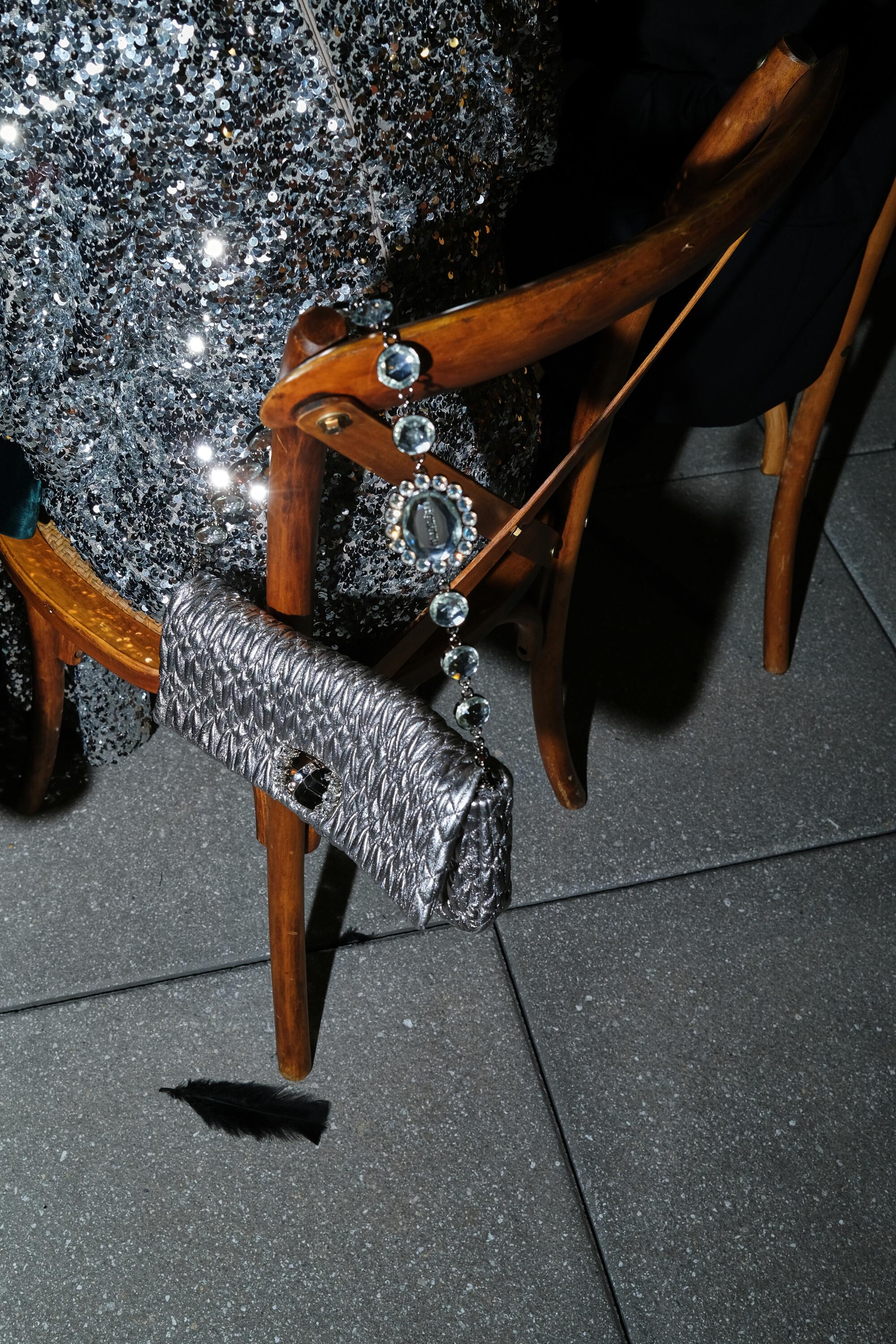
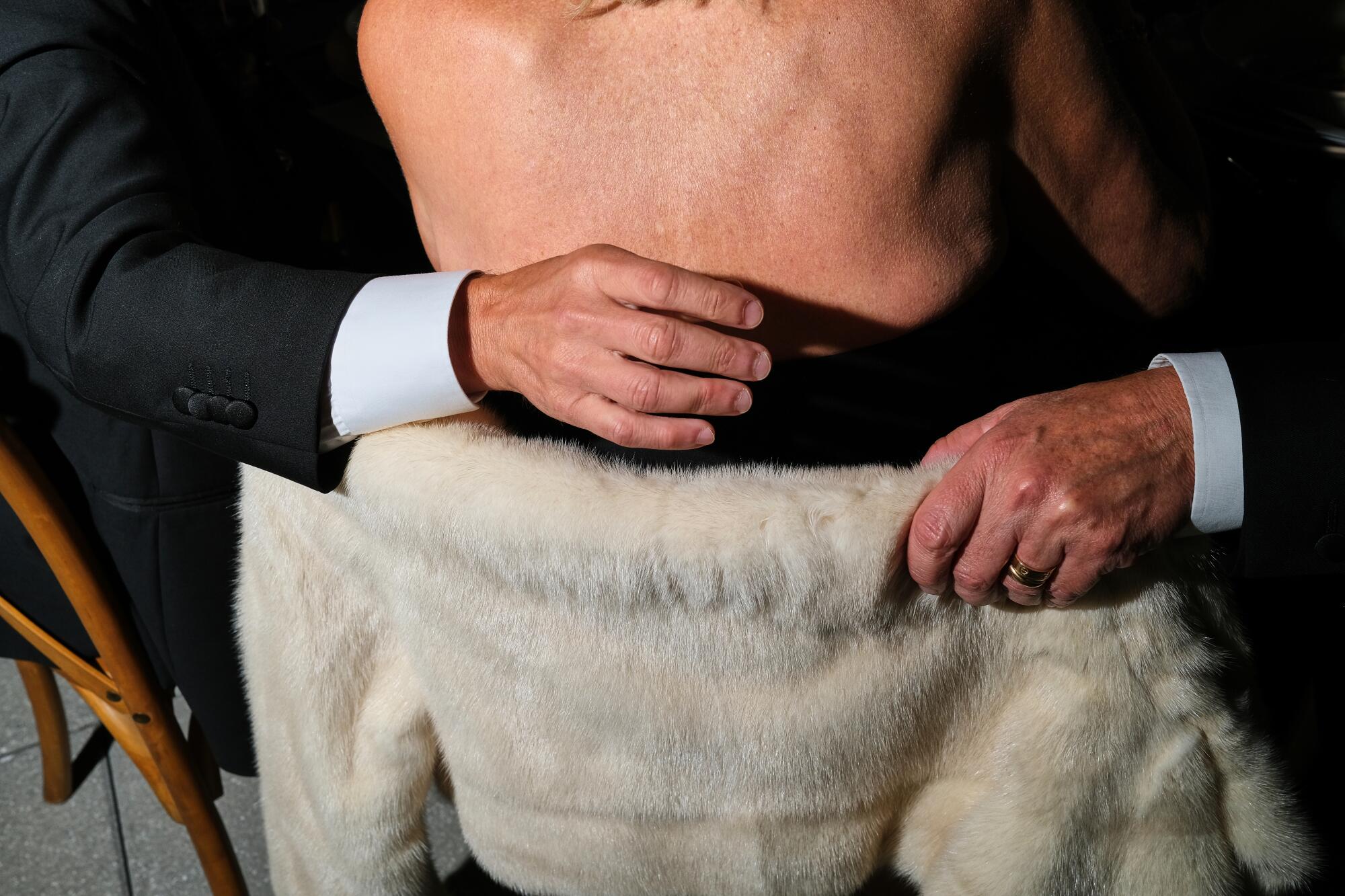
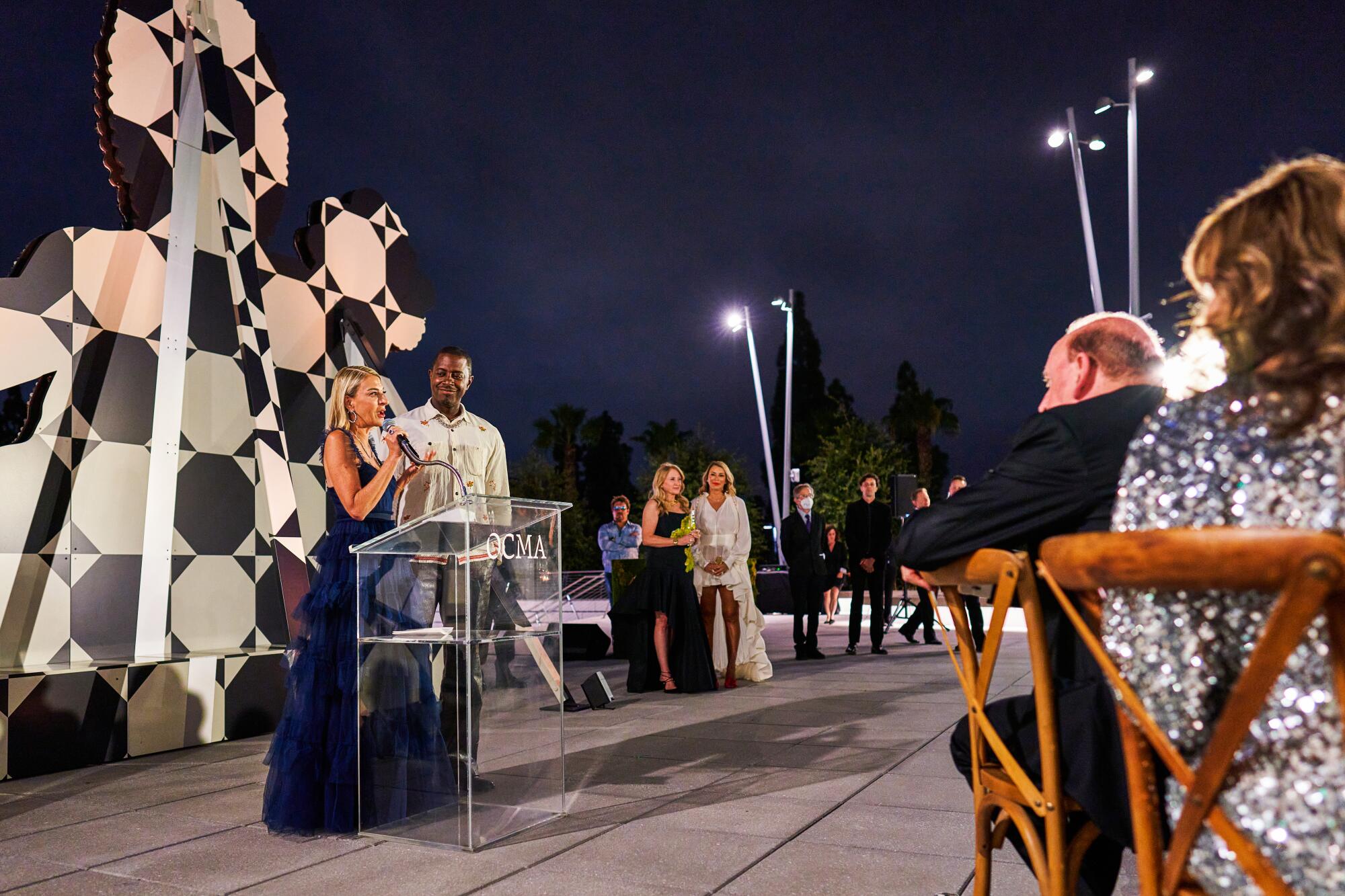
The evening’s guest of honor was Biggers, whose large-scale, site-specific sculpture, “Of many waters …” (2022), welcomed guests atop the museum’s grand staircase on the upper terrace. The 24-foot-wide, 16-foot-tall steel-and-aluminum piece adorned with two-toned sequins — a hybrid representation of both African and European classical sculpture — shimmered against the setting sun as dinner got underway. Biggers described the piece as being about many things, including “painting, optics, composition, trompe l’oeil and illusionary space. But it’s also in conversation with monuments and memorials and history and culture.”
The evening, Biggers added, felt like a homecoming in more ways than one. The New York-based artist is from Los Angeles — he grew up in Baldwin Hills — but also, Zuckerman is an old friend of 20 years. The two worked together on his first museum show, “Psychic Windows,” when she was a curator at the UC Berkeley Art Museum and Pacific Film Archive in 2002. “So to be able to return and collaborate again is deeply satisfying,” he said.
At the start of dinner, outdoors on the terrace, Zuckerman welcomed the crowd.
“What if we ask ourselves, in every moment of every hour of every day for the rest of our lives, ‘what would I love?’” she said. “What if we allow ourselves the incredible gift of connecting with our truest and deepest desires? What if we believe that we are not just able or entitled to do so, but that we know that by granting ourselves this gift of connection, that we make the world better — better for ourselves, for our partners, for our children, for the planet? What if this space of art encourages and reinforces this notion?”
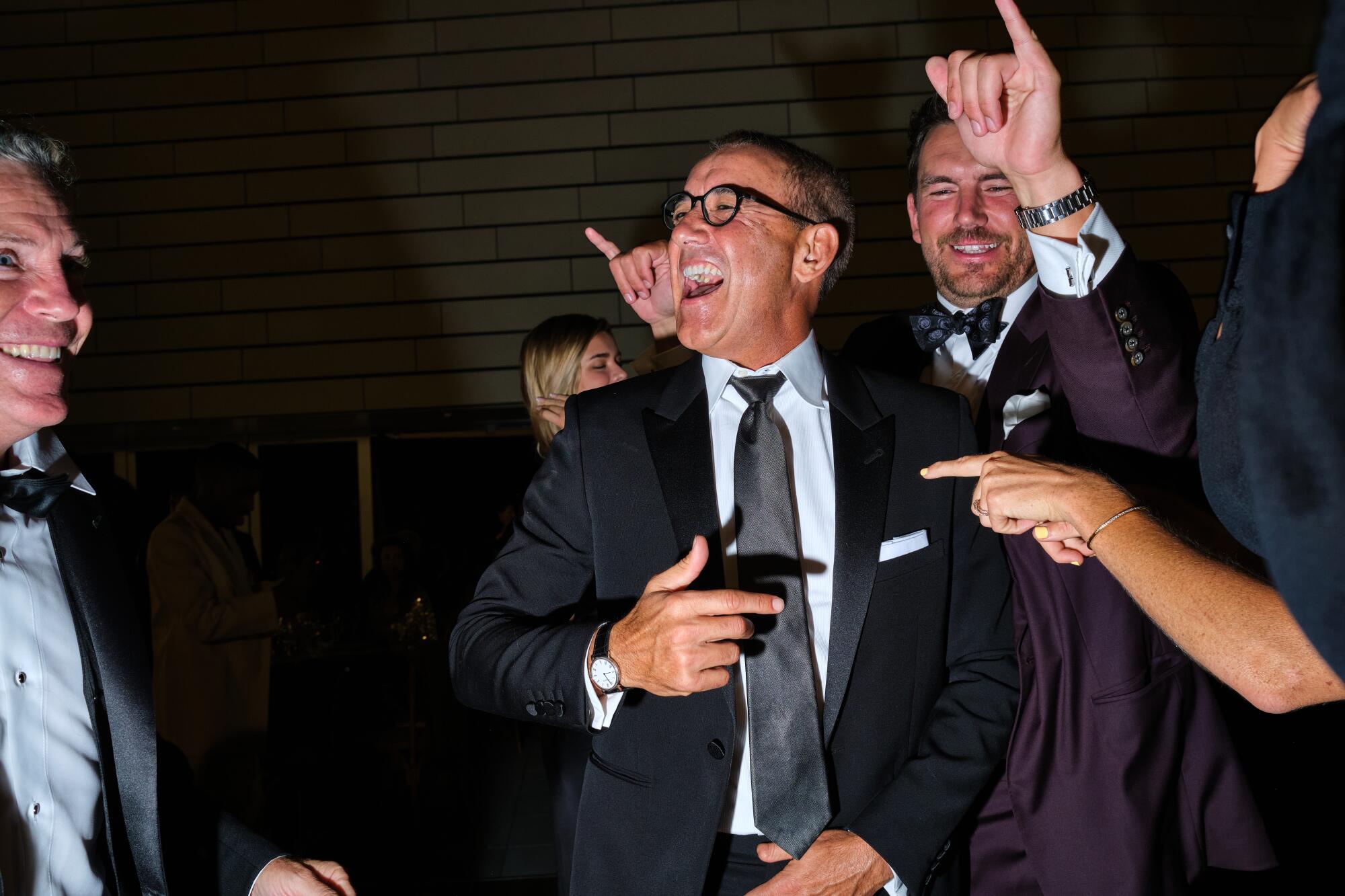
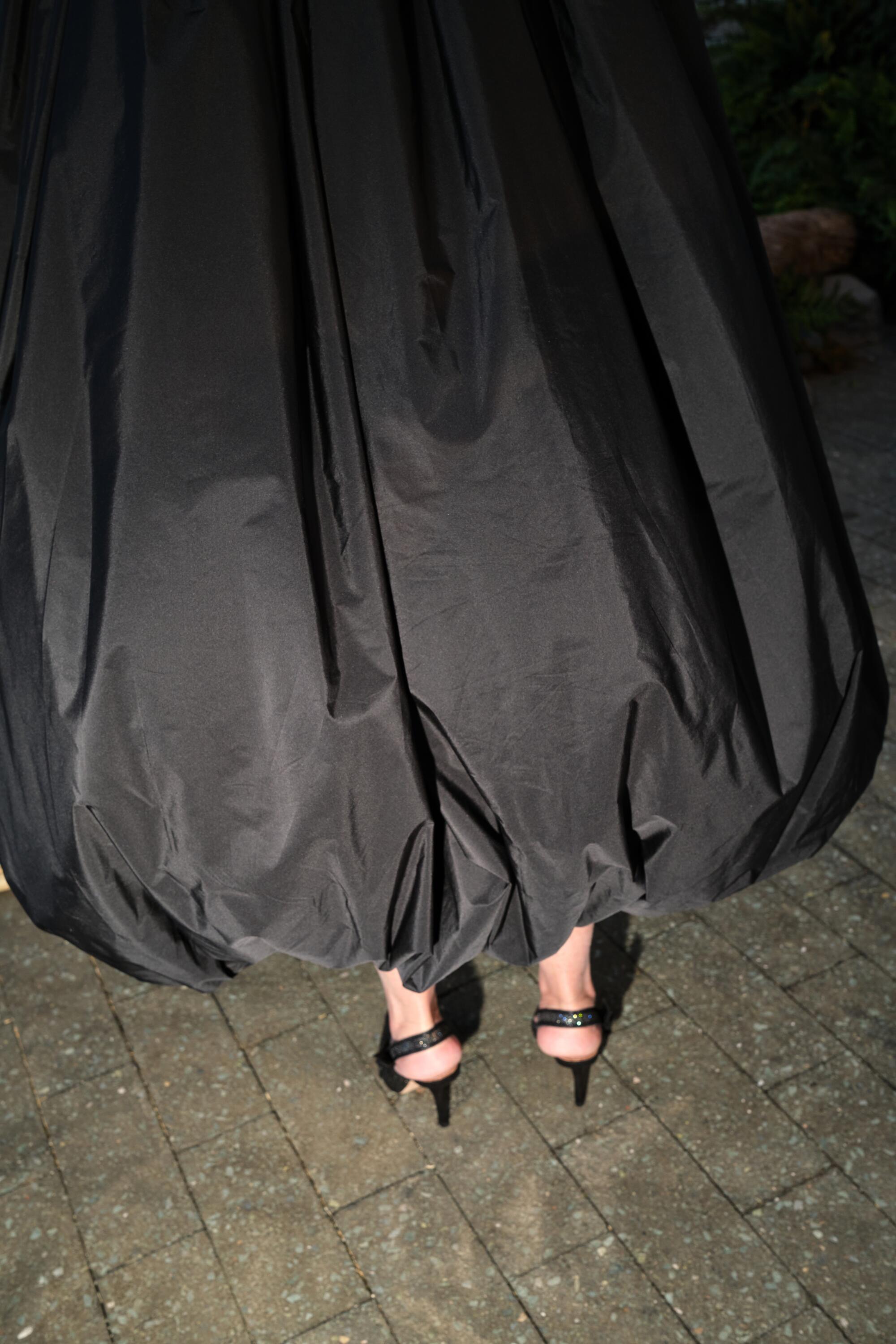
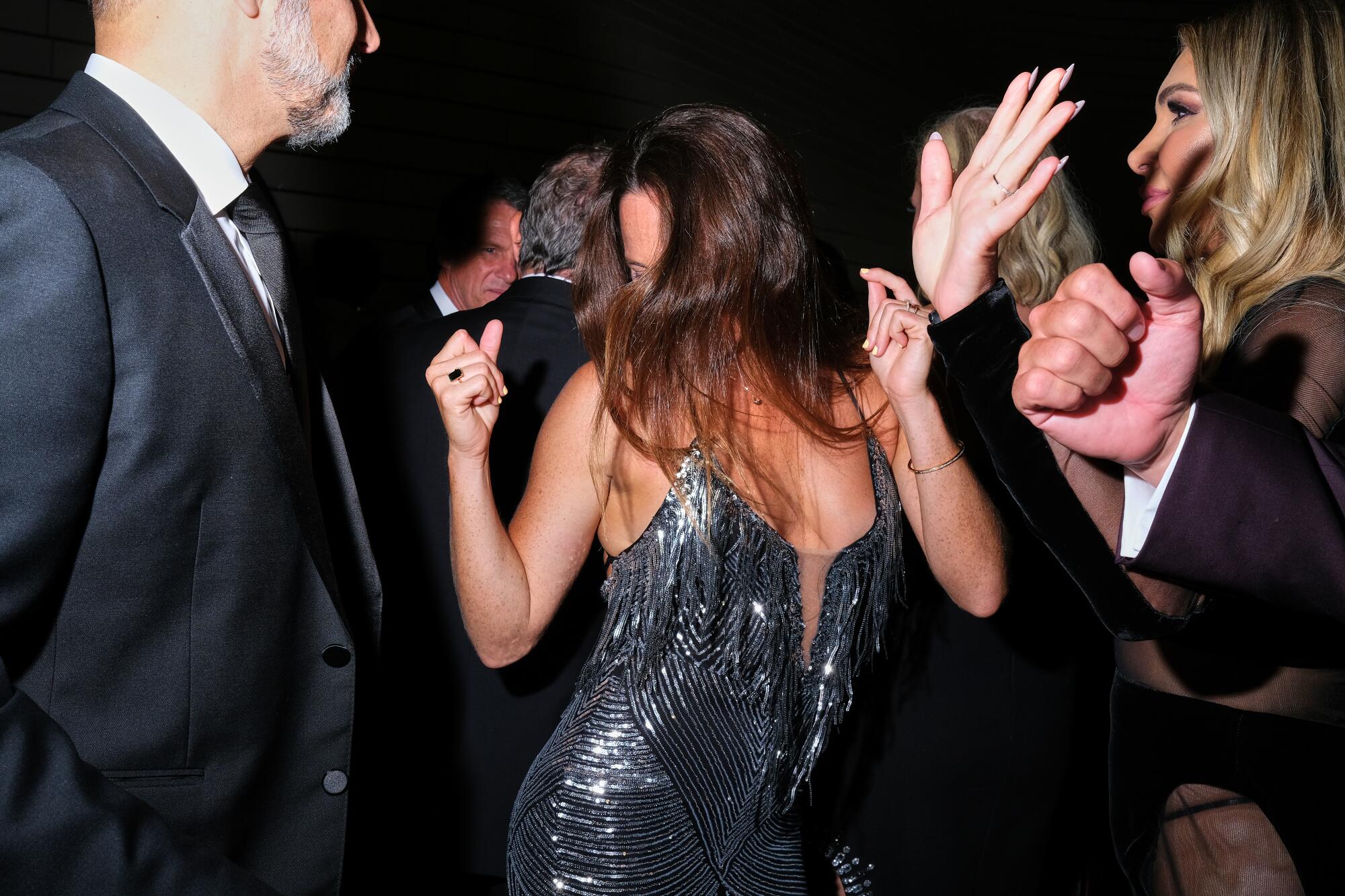
The event, she added, raised more than $2.1 million for the museum — more than double what the museum raised at its gala last year.
But nothing says utopia like a lavish, open-air wine pairing on a crisp fall evening (guests were given blankets, a nice touch). The four-course dinner, by Untitled Events, included no less than seven wine pairings, with separate glasses for each pour. That meant about 70 empty wine glasses, of varying heights and shapes, clustered together and blanketing each tabletop at the start of the meal.
Master sommelier Jay Fletcher walked the crowd through the wines being served, describing a French Chablis as having come from “cold, choppy soil” and being somewhat “nervy.” (It was, indeed, quite spirited.)
Soon the assortment of glassware was filled, to varying degrees, with liquid in different hues of ruby red and gold. Event searchlights crisscrossed the darkened sky, swooping over the table so that bits of light glinted off the wine glass edges. The effect was surprisingly beautiful, like an evolving, utilitarian, art installation tabletop centerpiece.
At which point, DJ Dylan cranked up a house remix of “Funky Town.” And guests flowed onto the dance floor at the center of the plaza, a celebratory sea of silver tassels, silver trains and silver sequins.
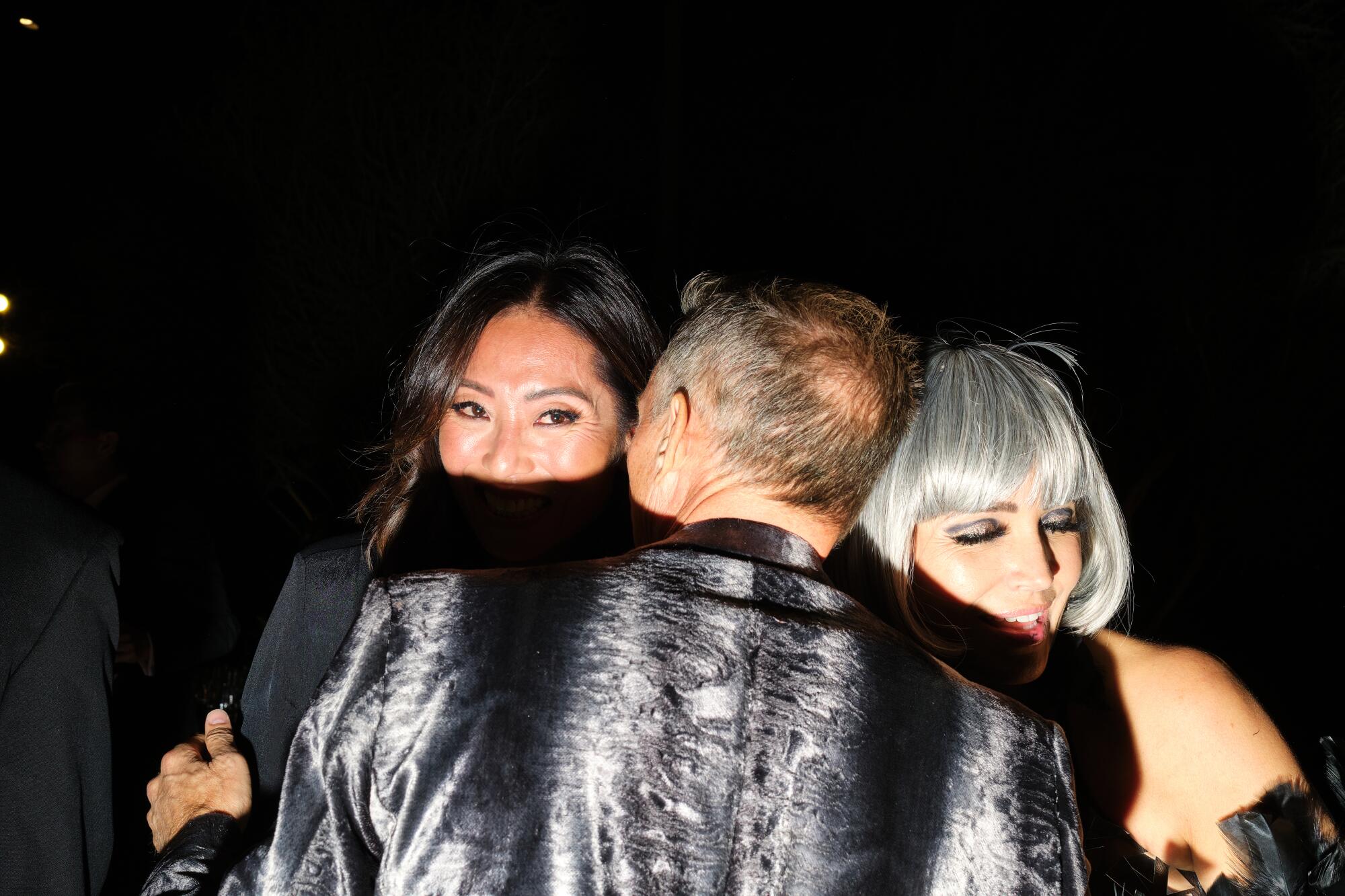
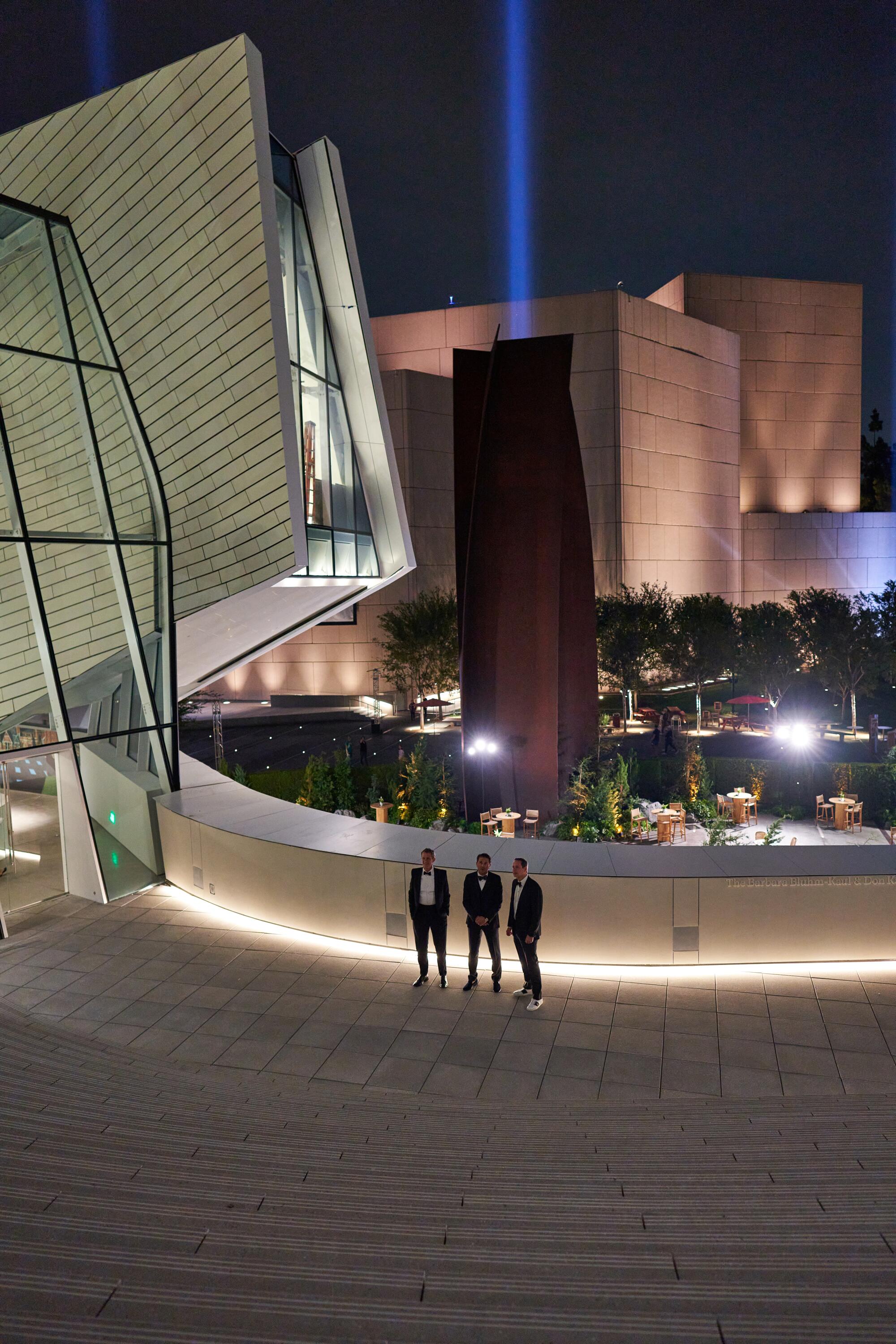
More to Read
The biggest entertainment stories
Get our big stories about Hollywood, film, television, music, arts, culture and more right in your inbox as soon as they publish.
You may occasionally receive promotional content from the Los Angeles Times.











